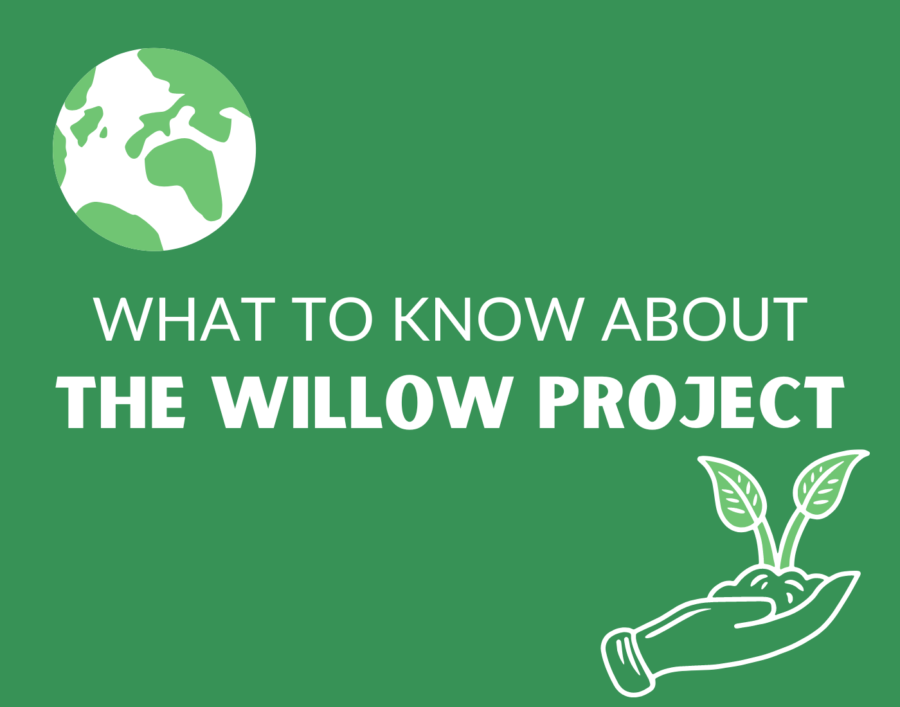What to know about the Willow Project
The Biden Administration approved the Willow Project.
March 21, 2023
Oil has been a big part of U.S. history and the economy. A person living in the U.S. would find it very difficult to go a day without gas or petroleum byproducts of refining oil. However, drilling for oil in the United States has become more and more controversial amidst accusations of damage to the environment and other possible issues.
One of the most controversial oil drilling projects as of late is the Willow Project. The project is being headed by Conoco Philips and was recently granted permission by President Biden to move ahead with the proposal. The Willow Project will be located on 500 acres of federal land on the North Slope in Alaska.
The Willow Project is expected to generate 180,000 barrels of oil per day at its peak. This would allow the United States to have to rely on other countries’ imported oil a little less, hopefully also dropping prices on oil and its refined products. The Willow Project is also estimated to produce 2,500 construction jobs and 300 permanent jobs; whether or not Alaska residents will be prioritized for the jobs has not been disclosed. The Willow Project will also produce between eight and 17 billion dollars worth of revenue for the federal government and the Alaska State government.
OHS science teacher and Green Team adviser, Ms. Brickley said, “I have mixed feelings about it [being approved] because there’s some good things about it as far as creating jobs and revenue for that area, but as far as environmentally, it is frustrating because any kind of oil drilling project is going to have environmental hazards that come with it.”
While many people are excited for the economic benefits from the Willow Project, others are worried about potential disastrous effects on the environment as a result from drilling for oil. The Willow Project is expected to produce a projected 278 million tons of greenhouse gasses. Many Native American tribes are also worried as the drilling could impact the caribou’s path through Alaska and the tribes subsistence lifestyles which largely rely on the caribou. Activists strongly believe that the oil drilling will negatively impact the ecology in the surrounding area of the Willow Project. Conoco Philips says they have plans in place to protect the environment around the oil drilling site; the plans, however, are not foolproof.
In 2011, China sued Conoco Philips over an oil spill in their country. On Oct. 27, 2010, an oil spill went unreported to the Washington Department of Ecology. An estimated 10,500 gallons of diesel fuels were leaked out of an underground pipeline. Activists are worried how a potential spill could affect the habitats and animals surrounding the drilling site.
#STOPWILLOW has been trending on many social media platforms and has continued to have support after President Biden approved the Willow Project. Many of these protesters are against the Willow Project, not only for the possible negative effects on the environment surrounding the drilling site, but also for opening a new source of fossil fuel.
OHS biology teacher Mr. Seth Muir said, “[The Willow Project] is only going to exacerbate the situation we have. Extracting more oil and burning more fossil fuels is going to release more carbon dioxide into the atmosphere and make our situation worse, not better.”
Many positive economic impacts could be made by approving the Willow Project, there are also many negative effects as well. In an effort to reduce effects of the drilling project, President Biden allowed for less land to be used for oil drilling and banned the use of thirteen million acres of land for oil drilling. Despite these efforts, Biden has been sued by multiple conservation groups, such as Green Peace, Earthjustice and the National Resources Defense Council for allowing new oil drilling to begin in the first place. There is sure to be many more updates in the near future.







